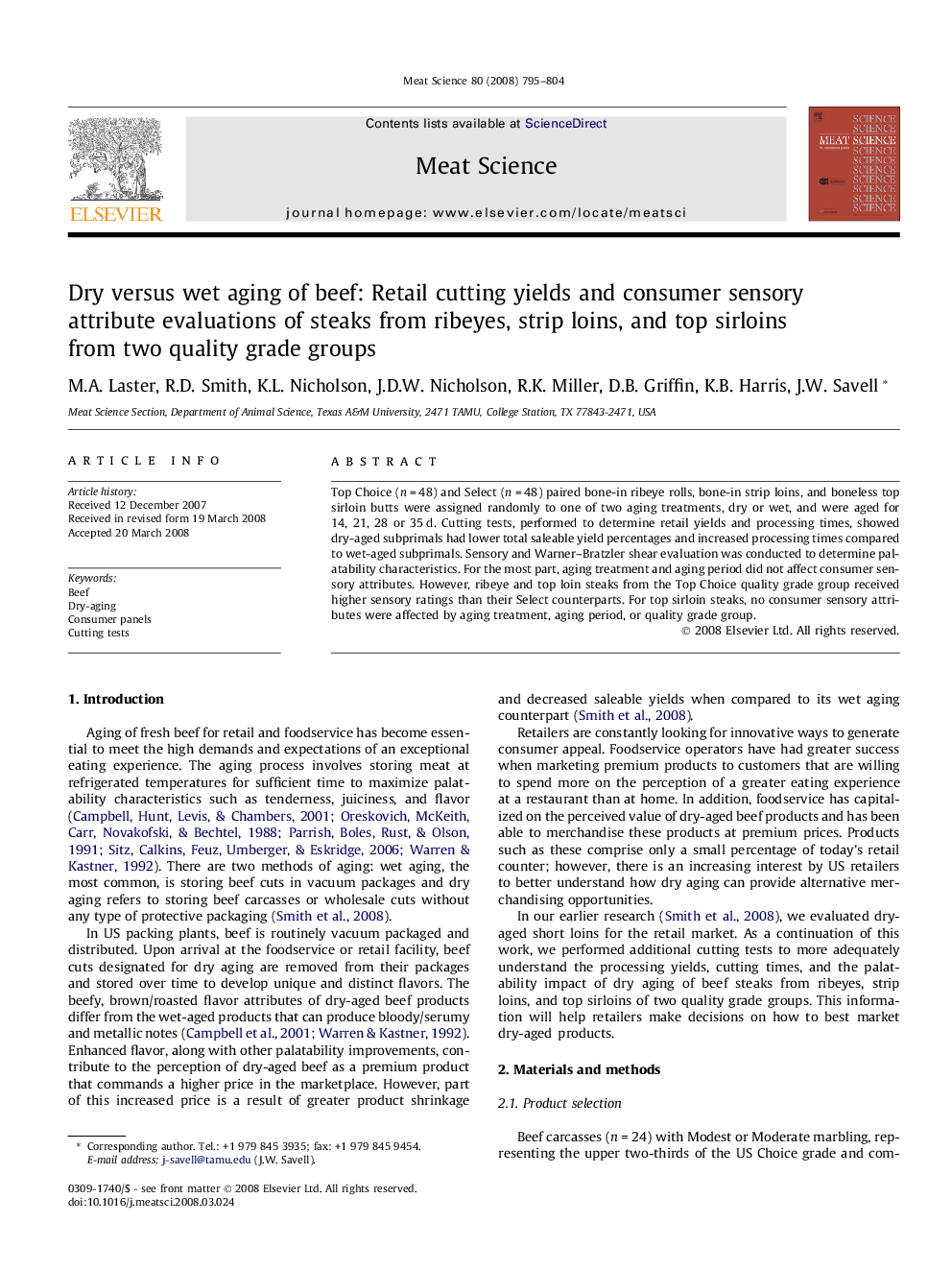| کد مقاله | کد نشریه | سال انتشار | مقاله انگلیسی | نسخه تمام متن |
|---|---|---|---|---|
| 2451384 | 1109680 | 2008 | 10 صفحه PDF | دانلود رایگان |

Top Choice (n = 48) and Select (n = 48) paired bone-in ribeye rolls, bone-in strip loins, and boneless top sirloin butts were assigned randomly to one of two aging treatments, dry or wet, and were aged for 14, 21, 28 or 35 d. Cutting tests, performed to determine retail yields and processing times, showed dry-aged subprimals had lower total saleable yield percentages and increased processing times compared to wet-aged subprimals. Sensory and Warner–Bratzler shear evaluation was conducted to determine palatability characteristics. For the most part, aging treatment and aging period did not affect consumer sensory attributes. However, ribeye and top loin steaks from the Top Choice quality grade group received higher sensory ratings than their Select counterparts. For top sirloin steaks, no consumer sensory attributes were affected by aging treatment, aging period, or quality grade group.
Journal: Meat Science - Volume 80, Issue 3, November 2008, Pages 795–804